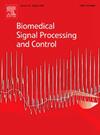Assessment of quality of electrocardiograms, seismocardiograms, and gyrocardiograms based on features derived from symmetric projection attractor reconstruction in healthy subjects
IF 4.9
2区 医学
Q1 ENGINEERING, BIOMEDICAL
引用次数: 0
Abstract
Signal quality assessment is essential for biomedical signal processing, analysis, and interpretation. Various methods exist, including averaged numerical values, thresholding, time- or frequency-domain analysis, and nonlinear approaches. The aim of this study was to evaluate the quality of electrocardiographic (ECG) signals, seismocardiographic signals (SCG), and gyrocardiograms (GCG) based on symmetric projection attractor reconstruction (SPAR) with Takens delay coordinates with fit five classifiers: random forest, gradient boosting, random forest XGB, and support vector machines (SVM) with various number of decision tree-based estimators (100–10,000) and various kernels (linear, radial base function, and polynomial), respectively. The analysis was carried out on a public dataset “Mechanocardiograms with ECG reference” containing 29 concurrent ECG, SCG, and GCG signal recordings. The highest values without SMOTE were observed for ECG signals, SVM with fourth order polynomial kernel (accuracy of 0.6897, PPV of 0.6019, sensitivity of 0.5306, and F1 score of 0.4952), and after applying SMOTE were observed for Gradient Boosting in ECG signal (200 estimators, accuracy 0.7500, PPV of 0.7747, sensitivity of 0.7500, and F2 score of 0.7747 respectively). These findings suggest that the SPAR-based approach is a promising method to accurately assess the quality of cardiovascular signals, including seismocardiograms and gyrocardiograms.
基于对称投影吸引子重建特征的健康受试者心电图、地震心电图和陀螺心电图质量评估
信号质量评估对生物医学信号处理、分析和解释至关重要。存在各种方法,包括平均数值,阈值,时域或频域分析以及非线性方法。本研究的目的是评估基于对称投影吸引子重构(SPAR)的心电图(ECG)信号、地震心动图(SCG)信号和陀螺仪(GCG)信号的质量,并采用Takens延迟坐标拟合五种分类器:随机森林、梯度增强、随机森林XGB和支持向量机(SVM),它们分别具有不同数量的基于决策树的估计器(100-10,000)和各种核(线性、径向基函数和多项式)。分析是在包含29个并发ECG、SCG和GCG信号记录的公共数据集“带ECG参考的力学心动图”上进行的。未使用SMOTE的心电信号、四阶多项式核支持向量机(准确率为0.6897,PPV为0.6019,灵敏度为0.5306,F1评分为0.4952)和应用SMOTE后的心电信号梯度增强(200个估计,准确率0.7500,PPV为0.7747,灵敏度0.7500,F2评分为0.7747)的结果最高。这些发现表明,基于spar的方法是一种有希望准确评估心血管信号质量的方法,包括地震心动图和陀螺仪心动图。
本文章由计算机程序翻译,如有差异,请以英文原文为准。
求助全文
约1分钟内获得全文
求助全文
来源期刊

Biomedical Signal Processing and Control
工程技术-工程:生物医学
CiteScore
9.80
自引率
13.70%
发文量
822
审稿时长
4 months
期刊介绍:
Biomedical Signal Processing and Control aims to provide a cross-disciplinary international forum for the interchange of information on research in the measurement and analysis of signals and images in clinical medicine and the biological sciences. Emphasis is placed on contributions dealing with the practical, applications-led research on the use of methods and devices in clinical diagnosis, patient monitoring and management.
Biomedical Signal Processing and Control reflects the main areas in which these methods are being used and developed at the interface of both engineering and clinical science. The scope of the journal is defined to include relevant review papers, technical notes, short communications and letters. Tutorial papers and special issues will also be published.
 求助内容:
求助内容: 应助结果提醒方式:
应助结果提醒方式:


